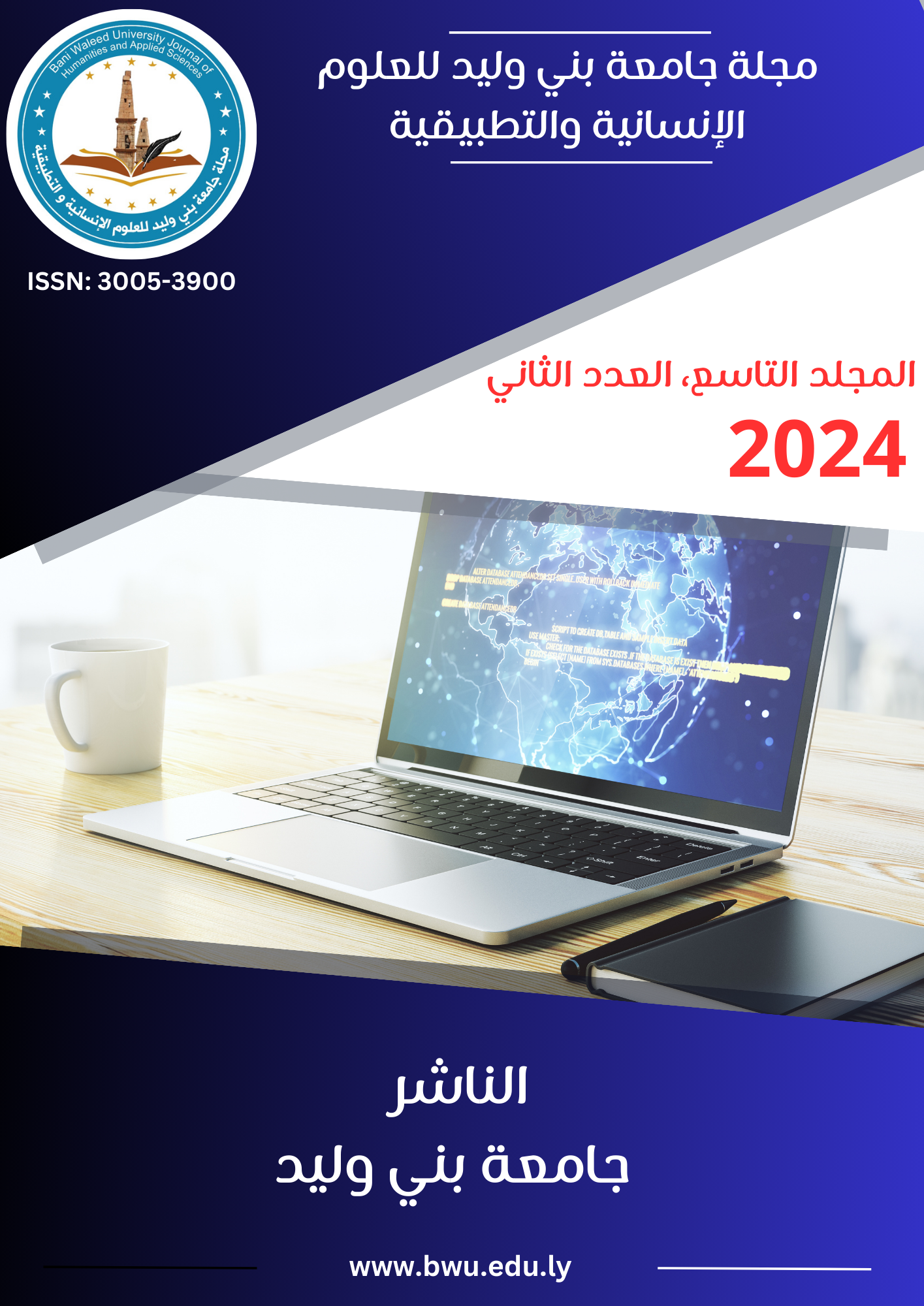كيفية إنتاج الغذاء الحلال: دليل شامل عن التشريعات الإسلامية والممارسات الصناعية الجيدة والبرامج الفعالة (دراسة مرجعية)
DOI:
https://doi.org/10.58916/jhas.v9i2.243الكلمات المفتاحية:
الغذاء الحلال، التشريعات الإسلامية، المستهلكين، طرق التصنيع، ممارسات التصنيع الجيد.الملخص
أصبحت كلمة حلال معروفة على نطاق واسع حول العالم وهي تعني ما أحل للمسلمين شرعاً حسب ما ورد في الشريعة الإسلامية، و يُقصد بالطعام الحلال الطعام والشراب أو مكوناتهما، إضافة للأدوية، المسموح بها و التي يجب أن تستوفي شروطاً تلزم صحة و سلامة المستهلك، ونتيجة لازدهار تجارة إنتاج الأغذية الحلال, و التي وصلت لما يقارب 4 ترليون دولار لعام 2022, اتجهت أغلب الدول المصدرة للغذاء بإنتاج الغذاء الحلال, و لا يخفى أن السبب الرئيسي للإنتاج هو ربحي و أن أغلب الجهات المصدرة للأغذية الحلال هي دول غير مسلمة ,إضافة إلى اختلاف معايير اتباع الإسلام في تعريف ماهية الحلال و الحرام بين الدول المسلمة, عليه؛ فإنّ صلاحية المنتج للمستهلك المسلم غير مضمونة و تفرض اتخاذ تدابير توفر و تؤكّد انتاج أغذية حلال تحت الشروط والمعايير المطابقة للشرع الإسلامي بدءًا من المكونات ووصولاً لأماكن توزيعها علي المستهلكين، وتكمن هذه الحلول في توفير برنامج إنتاجي للغذاء الحلال يعتمد أساسها على تعريف الشريعة الإسلامية للأغذية الحلال والحرام والشروط اللازم توفرها للحصول على المواد الخام و طرق التصنيع و التغليف و التوزيع، وفي هذه الدراسة سيتم تفصيل المعايير والاشتراطات المتبعة لإنتاج أغذية حلال و طرح أفضل البرامج المتبعة في إنتاج الأغذية الحلال.
التنزيلات
المراجع
Abdul Rohman, Wiranti Sri Rahayu, Sudjadi Sudjadi, Sudibyo Martono. 2021. The Use of Real-Time Polymerase Chain Reaction Combined with Specific-Species Primer for Analysis of Dog Meat DNA in Meatball. Department of Pharmaceutical Chemistry, Faculty of Pharmacy, Universitas Gadjah Mada, Sekip Utara, Vol 21, No 1.
Ali Abdallah, Mohammed Abdel Rahem & Antonella Pasqualone. 2021. The multiplicity of halal standards: a case study of application to slaughterhouses. Journal of Ethnic Foods. ISSN: 2352-6181.
Anderson, E. and Coughlan, A.T. 1987. "International Market Entry and Expansion via Independent or Integrated Channels of Distribution". Journal of Marketing, Vol. 51.
Hamadah N. Lubis. Noor F. Mohd-Naim. Nur Nazurah Alizul. 2016. Current trusted technology and innovations in halal food analysis. Trends in Food Science & Technology DOI:10.1016/j.tifs.2016.10.024.
Hashed Mabkhot. 2023. Factors Affecting the Sustainability of Halal Product Performance: Malaysian Evidence. Vol: 15(3):1850
Heri Pratikto . Adam Voak. Nurdeng Deuraseh. Hadi Nur. Winai Dahlan. Agus Purnomo. 2020. Ahmad Taufiq Halal Development: Trends, Opportunities and Challenges. CRC Press/Balkema is an imprint of the Taylor & Francis Group . DOI: 10.1201/9781003189282.
Hussein Elasrag, 2016, Halal Industry: Key Challenges and Opportunities. SSRN Electronic Journal.
Made Gayatri Anggarkasih , Prima Sukmana Resma. 2022. The Importance of Halal Certification for the Processed Food by SMEs to Increase Export Opportunities. College of Vocational Studies IPB University, Jl. Kumbang No.14 Bogor, Indonesia. DOI:10.1051. Vol: 348.
Mansour bin Zayed Al Nahyan. 2020. Resolution of the Chairman of the Board of Directors of the Abu Dhabi Agriculture and Food Safety Authority No. (6) of 2020 issuing a food hygiene system during the stages of the food chain. Abu Dhabi Agriculture and Food Safety Authority.
MS 1500; 2009. (English): HALAL FOOD - PRODUCTION, PREPARATION, HANDLING AND STORAGE - GENERAL GUIDELINES (SECOND REVISION)
Nisreen Burji. 2015. Halal products in the world: between industry problems and challenges of Sharia control (study of the Malaysian experience) Humanities Journal. Vol: 15.
Nor Ai’han Mujar . Norizan Hassan . 2014. The Economics of Halal Industry. Faculty of Islamic Civilization. Conference paper.
Ricca R. Nasaruddin. 2011. The Importance of a Standardized Islamic Manufacturing (IMP) for Food and Pharmaceutical Productions. International Conference on Professional Ethics and Education in Engineering. International Islamic University Malaysia, Kuala Lumpur, Malaysia. ISBN : 978-983-42978-2-4
Siddique E Azam & Moha Asri. 2020. GLOBAL HALAL INDUSTRY: REALITIES AND OPPORTUNITIES. International Institute for Halal Research and Training, International Islamic University Malaysia, Vol: 5(1):47. DOI: 10.30659.
Tengku Nor Hidayati, Hasan Ahmad. 2016. Halal Analysis of An Aquatic Animal(pangasius sutchii) using RT-PCR For Detection of Porcine DNA. The National Conference for Postgraduate Research, Universiti Malaysia Pahang. Jurnal Universitas Gadjah Made.
Tohe, H. Pratikto & Kholisin R.B. Atan. 2021. Halal destinations in Asia: A SWOT analysis. Universitas Negeri Malang, Malang, Indonesia .Universiti Putra Malaysia. Universitas Islam Malang, Malang, DOI 10.1201/9781003189282-2
Voak. A. Fairman.B. 2020. Anticipating Human Resource Development Challenges and Opportunities in ‘Halal Supply Chains’ and ‘Halal Logistics’ within ASEAN. Deakin University, Building LA, 70, Elgar Rd, Burwood VIC 3125, Australia Vol 1,
Voak. A. Fairman.B. 2021. Building human capability to ensure halal supply chain compliance. Deakin University, Melbourne, Australia. ASEAN Institute of Applied Learning, Indonesia. DOI 10.1201/9781003189282-1
Yunes R. Al-Teinaz. Stuart Spear . Ibrahim H. A. Abd El-Rahim. 2020. The Halal Food Handbook. DOI:10.1002/978.
Zaher Fouad. 2017. Ensuring the safety of animal food products in Islamic jurisprudence and its contemporary applications. Faculty of Dar Al Uloom - Minya University. Journal of Arab Studies. DOI: 163202.








